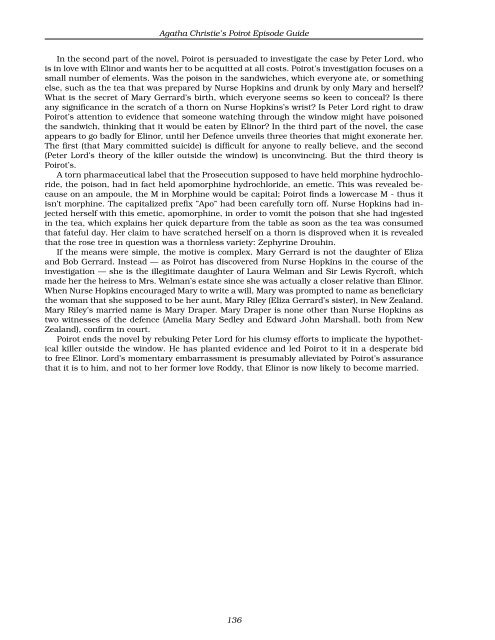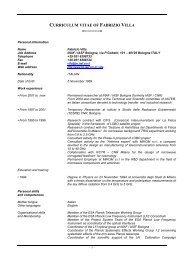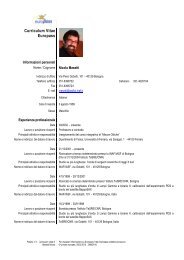Agatha Christie's Poirot Episode Guide - inaf iasf bologna
Agatha Christie's Poirot Episode Guide - inaf iasf bologna
Agatha Christie's Poirot Episode Guide - inaf iasf bologna
Create successful ePaper yourself
Turn your PDF publications into a flip-book with our unique Google optimized e-Paper software.
<strong>Agatha</strong> Christie’s <strong>Poirot</strong> <strong>Episode</strong> <strong>Guide</strong><br />
In the second part of the novel, <strong>Poirot</strong> is persuaded to investigate the case by Peter Lord, who<br />
is in love with Elinor and wants her to be acquitted at all costs. <strong>Poirot</strong>’s investigation focuses on a<br />
small number of elements. Was the poison in the sandwiches, which everyone ate, or something<br />
else, such as the tea that was prepared by Nurse Hopkins and drunk by only Mary and herself?<br />
What is the secret of Mary Gerrard’s birth, which everyone seems so keen to conceal? Is there<br />
any significance in the scratch of a thorn on Nurse Hopkins’s wrist? Is Peter Lord right to draw<br />
<strong>Poirot</strong>’s attention to evidence that someone watching through the window might have poisoned<br />
the sandwich, thinking that it would be eaten by Elinor? In the third part of the novel, the case<br />
appears to go badly for Elinor, until her Defence unveils three theories that might exonerate her.<br />
The first (that Mary committed suicide) is difficult for anyone to really believe, and the second<br />
(Peter Lord’s theory of the killer outside the window) is unconvincing. But the third theory is<br />
<strong>Poirot</strong>’s.<br />
A torn pharmaceutical label that the Prosecution supposed to have held morphine hydrochloride,<br />
the poison, had in fact held apomorphine hydrochloride, an emetic. This was revealed because<br />
on an ampoule, the M in Morphine would be capital; <strong>Poirot</strong> finds a lowercase M - thus it<br />
isn’t morphine. The capitalized prefix ”Apo” had been carefully torn off. Nurse Hopkins had injected<br />
herself with this emetic, apomorphine, in order to vomit the poison that she had ingested<br />
in the tea, which explains her quick departure from the table as soon as the tea was consumed<br />
that fateful day. Her claim to have scratched herself on a thorn is disproved when it is revealed<br />
that the rose tree in question was a thornless variety: Zephyrine Drouhin.<br />
If the means were simple, the motive is complex. Mary Gerrard is not the daughter of Eliza<br />
and Bob Gerrard. Instead — as <strong>Poirot</strong> has discovered from Nurse Hopkins in the course of the<br />
investigation — she is the illegitimate daughter of Laura Welman and Sir Lewis Rycroft, which<br />
made her the heiress to Mrs. Welman’s estate since she was actually a closer relative than Elinor.<br />
When Nurse Hopkins encouraged Mary to write a will, Mary was prompted to name as beneficiary<br />
the woman that she supposed to be her aunt, Mary Riley (Eliza Gerrard’s sister), in New Zealand.<br />
Mary Riley’s married name is Mary Draper. Mary Draper is none other than Nurse Hopkins as<br />
two witnesses of the defence (Amelia Mary Sedley and Edward John Marshall, both from New<br />
Zealand), confirm in court.<br />
<strong>Poirot</strong> ends the novel by rebuking Peter Lord for his clumsy efforts to implicate the hypothetical<br />
killer outside the window. He has planted evidence and led <strong>Poirot</strong> to it in a desperate bid<br />
to free Elinor. Lord’s momentary embarrassment is presumably alleviated by <strong>Poirot</strong>’s assurance<br />
that it is to him, and not to her former love Roddy, that Elinor is now likely to become married.<br />
136

















